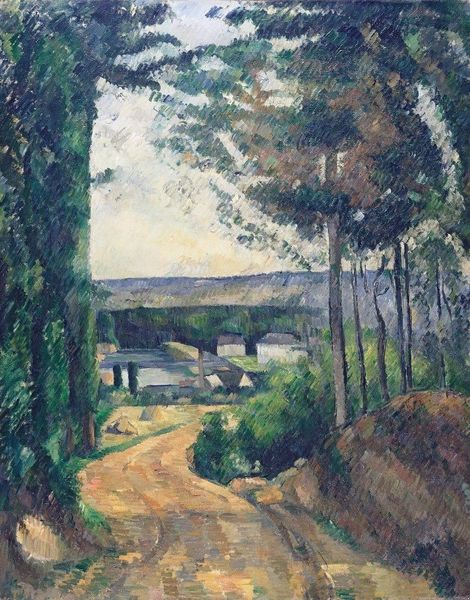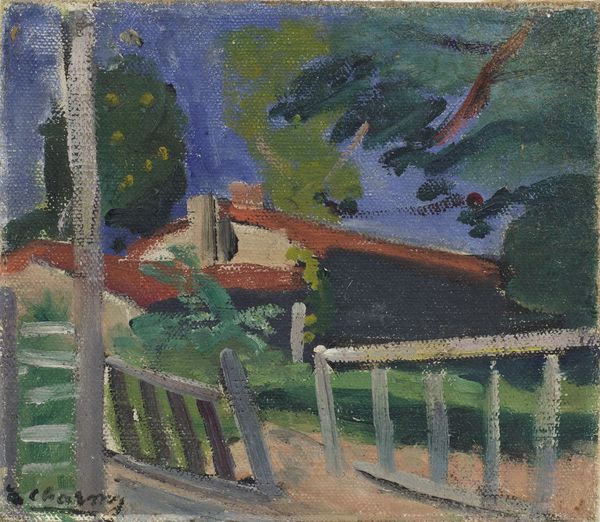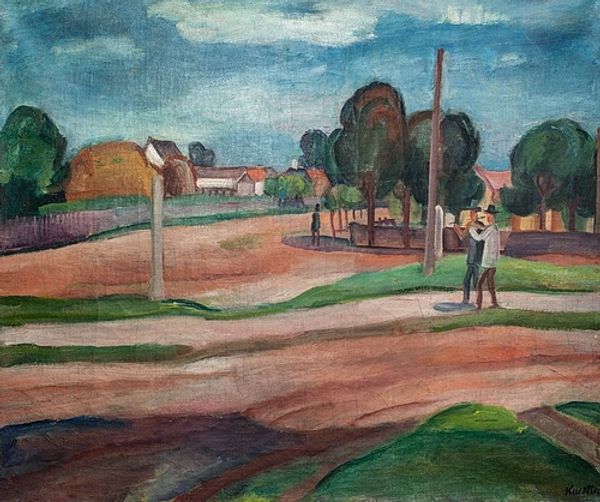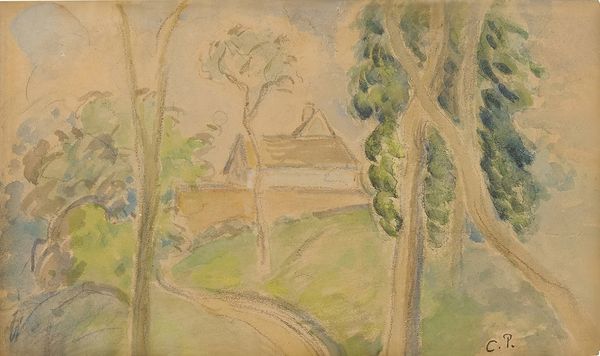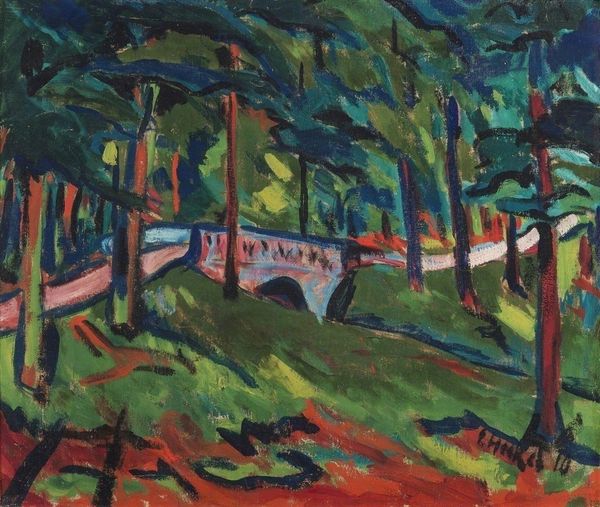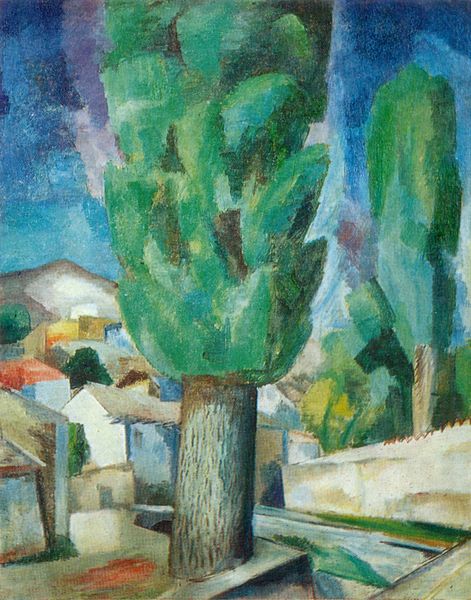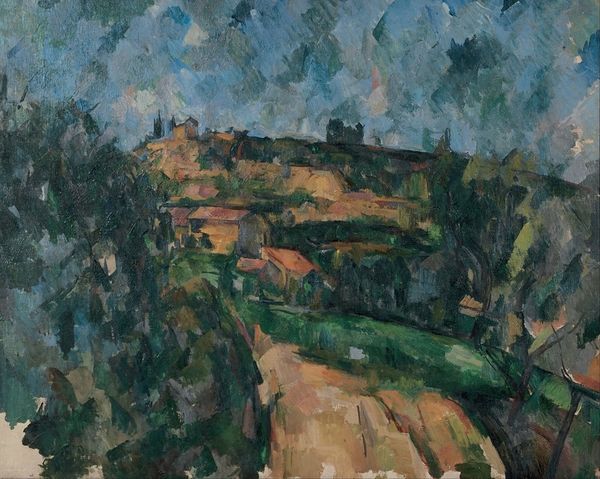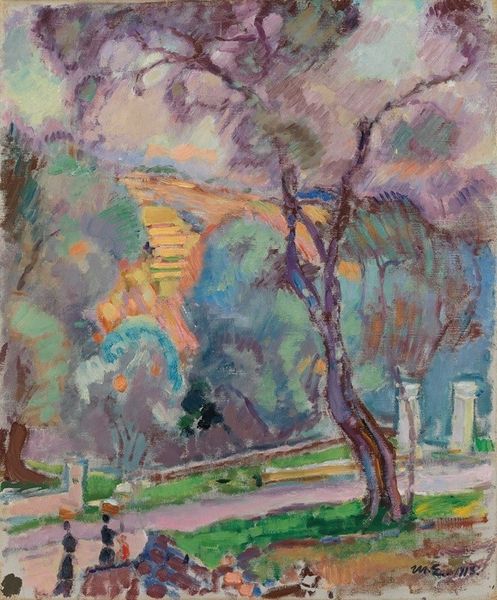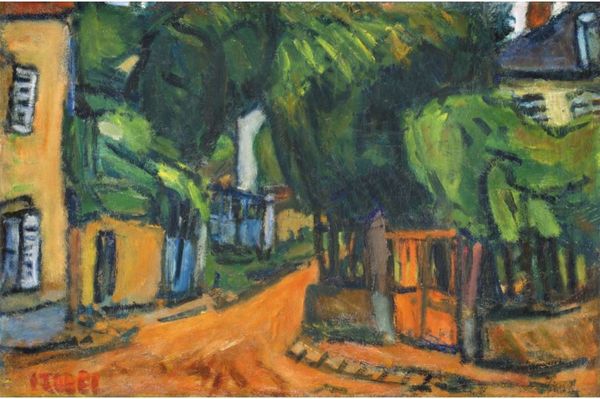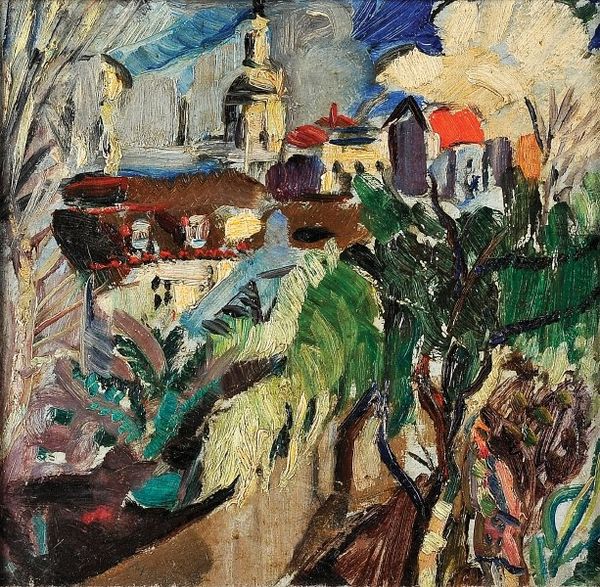
Copyright: Public Domain: Artvee
Curator: Looking at this, I immediately see a sense of melancholy, even in the bright colors. There's something almost desolate about the scene, despite the trees and hints of a cityscape in the distance. Editor: We’re looking at "Trees by the Canal," a 1908 oil on canvas by Edvard Munch. It’s a quintessential cityscape rendered with the expressive brushwork we often associate with Expressionism and hints of Impressionism. Curator: Impressionism, really? Beyond the loose brushstrokes, the palette feels much too emotionally charged, even discordant for the style. I mean, the tactile quality of the paint itself draws me in. Editor: True. It seems like he’s using those looser strokes as a way to free himself from the conventional, tapping into that period’s broader fascination with subjective experience and challenging established social norms and aesthetic values within art institutions. The early 20th century witnessed dramatic changes in how art was perceived and valued. Curator: Absolutely, and consider the subject: not a grand vista, but a rather unremarkable canal-side. Was this a deliberate rejection of traditional landscape painting? Instead, we are given a slice of modern life, depicted through the lens of a clearly burdened psyche. Editor: Precisely. Museums like the one holding this piece help contextualize these "slices of life", shaping our understanding of art's public role and contributing to ongoing debates about visual representation. Munch exhibited widely, engaging with evolving definitions of 'good taste.' Curator: Right. You also can’t ignore the visible brushwork, the layering and blending of color – it draws attention to the physical act of painting, rather than just offering a window onto the world. It really emphasizes art as a tangible form of labour, a production that engages with the modern experience. Editor: And I appreciate how this connects to a larger conversation on how we interpret urban landscapes as sites of both opportunity and alienation – elements explored throughout Expressionism, and something visible even today within our cultural spaces. Curator: Well, seeing the blend of art and emotional articulation through Munch’s manipulation of materials makes me realize art history remains surprisingly relevant in today’s socio-political dialogue. Editor: Yes. Hopefully that is part of what audiences glean during their experience.
Comments
No comments
Be the first to comment and join the conversation on the ultimate creative platform.
